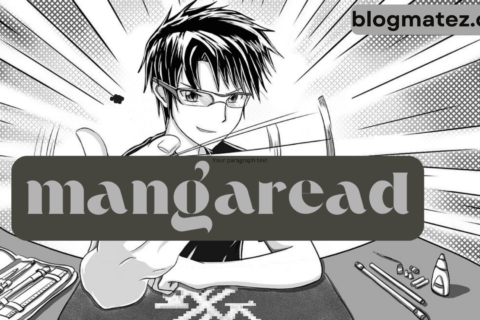Introduction to clarinet
The clarinet is one of the most widely recognized and versatile instruments in the woodwind family. Known for its broad range of tones, from deep, resonant lows to bright, clear highs, the clarinet is an essential part of orchestras, jazz ensembles, military bands, and even solo performances. This iconic instrument has evolved over centuries, playing a significant role in many musical genres and captivating audiences with its expressive sound.
The History of the Clarinet
The clarinet’s origins can be traced back to the early Baroque period. It evolved from an instrument called the chalumeau, which was a simple, single-reed instrument. In the early 1700s, Johann Christoph Denner, a German instrument maker, is credited with inventing the modern clarinet by adding a register key to the chalumeau, allowing it to access a broader range of notes.
Over the centuries, the clarinet underwent several modifications, including improvements to its key mechanism and bore design. These advancements made it a more versatile and powerful instrument, eventually earning it a prominent place in both classical and modern music.
Types of Clarinets
While most people are familiar with the standard B♭ clarinet, there are actually several different types of clarinets, each offering unique tonal qualities and ranges. Below are the most common types of clarinets used in music today:
B♭ Clarinet
The B♭ clarinet is the most popular and widely used clarinet. It is the instrument of choice for most clarinetists, especially in orchestras and bands. Its versatility allows it to produce a wide range of tones, from warm and rich to bright and lively.
- Range: E3 to C7
- Use: Classical, jazz, military bands, solo performances
A Clarinet
- Range: E3 to C7
- Use: Classical orchestras, chamber music
Bass Clarinet
The bass clarinet is larger than the standard B♭ clarinet and is pitched an octave lower. It produces deep, resonant tones that add depth to orchestral and band performances. The bass clarinet is particularly important in modern classical compositions and jazz.
- Range: C2 to G6
- Use: Orchestral, jazz, contemporary music
E♭ Clarinet
The E♭ clarinet is smaller and higher-pitched than the B♭ clarinet. It has a bright, sharp sound and is often used in orchestras to add brilliance and color to the ensemble. It is also common in military and marching bands.
- Range: G3 to E7
- Use: Orchestral, military bands, concert bands
Contrabass Clarinet
The contrabass clarinet is one of the largest and lowest-pitched members of the clarinet family. Its deep, rumbling sound is often used in contemporary classical music and certain jazz ensembles.
- Range: C1 to F4
- Use: Contemporary orchestral music, avant-garde compositions
Anatomy of the Clarinet
Understanding the anatomy of the clarinet is essential for players who want to master the instrument. The clarinet consists of several parts, each contributing to its sound and playability:
Mouthpiece and Reed
The mouthpiece is where the player blows air into the clarinet. It holds the reed, a thin piece of cane that vibrates to produce sound. The single reed is the defining feature of the clarinet’s tone production.
- Reeds: Typically made from cane, reeds come in different strengths, affecting the ease of play and sound quality.
Barrel
The barrel connects the mouthpiece to the rest of the clarinet and helps tune the instrument. Shorter barrels can raise the pitch, while longer barrels can lower it.
Upper and Lower Joint
The clarinet’s body is divided into two sections: the upper joint and the lower joint. These sections contain most of the clarinet’s keys, which the player presses to alter the instrument’s pitch.
Keys and Pads
The keys cover the clarinet’s tone holes, and pads ensure an airtight seal when a key is pressed. The placement and use of keys allow the player to produce the full range of notes.
Bell
The bell is the flared end of the clarinet, and it helps project the sound, especially lower notes. The bell plays an important role in refining the tone of the instrument, particularly in the low register.
Playing Techniques for the Clarinet
Mastering the clarinet requires a combination of proper technique and practice. The following are some of the key playing techniques that every clarinetist should be familiar with:
Embouchure
The clarinet’s embouchure refers to the way the lips, mouth, and facial muscles interact with the mouthpiece and reed. A correct embouchure is crucial for producing a clear and focused tone. The player’s lower lip should be positioned over the bottom teeth, and the reed should rest lightly on the lower lip.
Breathing and Air Support
Proper breath control is essential for producing a consistent sound on the clarinet. Players must develop strong diaphragmatic support to sustain long phrases and produce smooth, even tones across the instrument’s range.
Articulation
Articulation refers to how notes are started and stopped. Clarinetists use their tongue to control articulation by lightly touching the reed to begin and end notes. Techniques like staccato, legato, and tonguing are essential for creating musical expression.
Finger Technique
Developing dexterity in the fingers is vital for playing fast passages and complex musical pieces. Players must practice finger coordination to achieve smooth transitions between notes without disrupting the flow of music.
The Clarinet in Various Musical Genres
The clarinet’s versatility allows it to shine in a variety of musical genres. Its unique sound and wide range make it suitable for both classical compositions and more contemporary styles.
Classical Music
It has a long history in classical music, with composers like Mozart, Brahms, and Debussy writing concertos, chamber music, and symphonic works that feature the clarinet. Its ability to transition between soft, lyrical melodies and powerful, dynamic passages makes it a staple in orchestral settings.
Jazz Music
The clarinet played a pivotal role in the early development of jazz, particularly in Dixieland and swing music. Famous jazz clarinetists like Benny Goodman and Sidney Bechet helped popularize the instrument in jazz bands, where it was prized for its expressive, vocal-like quality.
Folk and World Music
In many cultures, the clarinet is featured in folk and traditional music. Its use in klezmer music, a Jewish folk genre, is particularly notable, with clarinetists performing highly ornamented, emotive melodies. The clarinet also appears in Greek, Turkish, and Balkan music traditions.
Caring for Your Clarinet
Proper maintenance is essential for keeping your clarinet in top playing condition. Here are some key care tips:
- Clean the instrument regularly: After playing, use a swab to remove moisture from the inside of the clarinet. This prevents damage to the wood or pads.
- Maintain the reeds: Reeds should be replaced regularly, as worn-out reeds can affect the sound and make playing difficult.
- Keep the keys oiled: Occasionally, apply a small amount of oil to the keys to ensure they move smoothly.
- Store the clarinet properly: When not in use, store the clarinet in its case to protect it from dust, temperature changes, and potential damage.
Conclusion
The clarinet is a captivating instrument that has earned its place in a variety of musical traditions worldwide. Its unique tone, dynamic range, and versatility make it a favorite among musicians in both classical and contemporary settings. Whether you’re a beginner or an experienced player, understanding the history, anatomy, and techniques of the clarinet will deepen your appreciation for this iconic woodwind instrument. By exploring different genres and practicing proper techniques, any clarinetist can unlock the full potential of this beautiful instrument.
FAQs
What materials are clarinets made from?
Clarinets are usually made from grenadilla or ebony wood, which gives a warm, rich tone. However, beginner models often use plastic because it’s more durable and affordable.
How long does it take to learn the clarinet?
You can start playing simple melodies on the clarinet within a few months, but mastering the instrument may take several years of regular practice.
How often should I change my clarinet reeds?
You should replace your reeds every 2-3 weeks if you play regularly. Worn-out reeds affect tone quality and make it harder to play.
Can I use the same clarinet for jazz and classical music?
Yes, you can use the same clarinet for both jazz and classical music. Many jazz musicians, however, prefer using a different mouthpiece or reed to achieve a specific jazz tone.
What’s the difference between a B♭ clarinet and an A clarinet?
The B♭ clarinet is more commonly used and sounds brighter, while the A clarinet produces a slightly lower, mellower tone and is often preferred in classical orchestras.
How do I care for a wooden clarinet?
To care for a wooden clarinet, keep it away from extreme temperatures and humidity to prevent cracking. Clean it regularly and apply oil to maintain its quality.
Can children learn to play the clarinet?
Yes, many children begin learning the clarinet around ages 9 or 10. Plastic clarinets are ideal for young learners because they are lighter and easier to handle.






